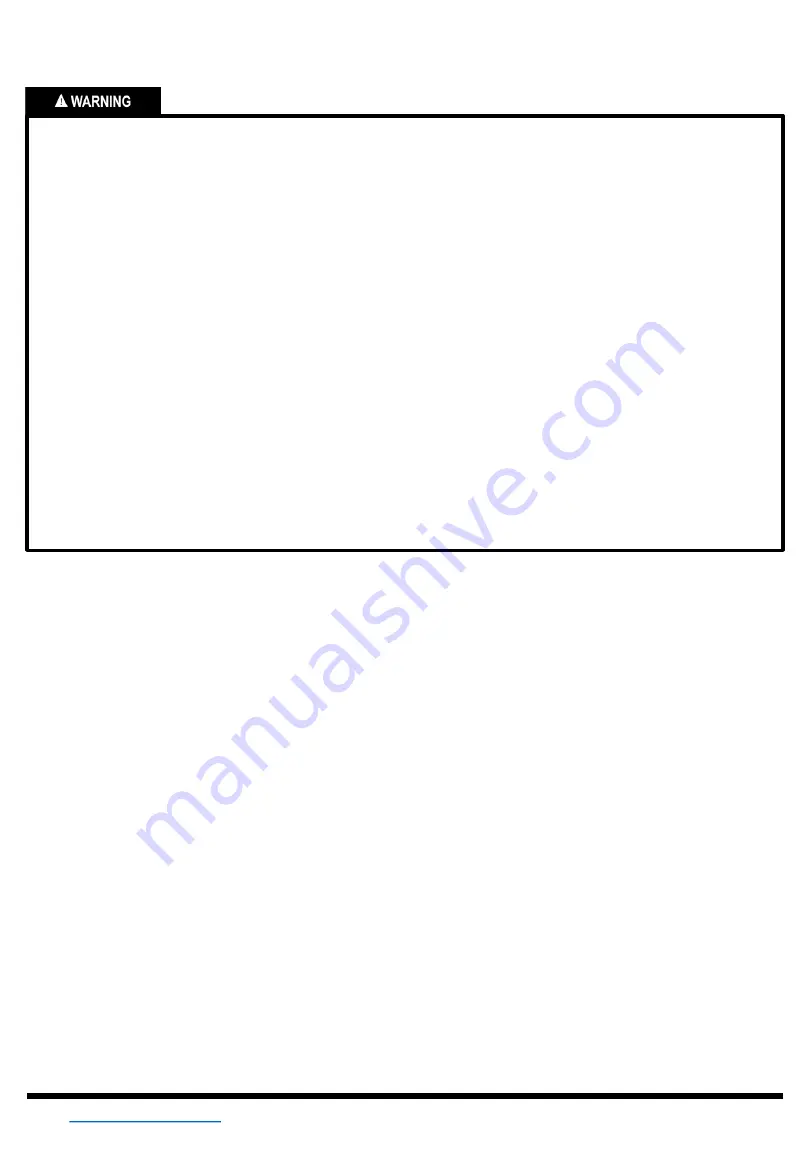
8839615
V 1.4
Visit
for more information
21
TIRES
Tires affect your vehicle handling, ride, braking, and safety. For optimum performance, tires must have the
correct air pressure, and be free from damage.
•
Keep the air pressure of the tire at the Maximum PSI recommended on the sidewall.
•
Keep a cap on the valve stem to prevent contamination of the internal valve seal.
•
Always travel with a spare and check the spare tire air pressure along with the other tires.
•
If you experience a blowout, slowly move over to a level area to change the tire and check the other tires for
possible damage.
•
Don’t overload the vehicle. Check the maximum weight limit for the vehicle.
•
Check the pressure of all tires before each trip.
•
During storage, keep the tires in a cool dry place and out of direct sunlight.
•
Replace the tires when there is damage, excessive wear (when tread depth is 1/8”(3.0mm) or less), or every
3 to 5 years.
•
Unusual vibration or thumping noises can indicate tire problems.
TIRE REPLACEMENT
•
This vehicle has tubeless tires. Tire replacement must be done by a qualified tire repair station or service
station. Damage to the inner wheel rim or tire bead when replacing tires will cause air to leak.
•
Tires that are installed incorrectly are hazardous and may cause unusual handling.
•
Tires that are intended to rotate in a specific direction as indicated by an arrow on the sidewall must be
installed correctly.
TIRE TYPE
The vehicle is equipped with five low pressure tubeless tires. The size of the tire is 18x7.00-8 (180/70-8), and
the rim is 8x5.50
MAXIMUM WEIGHT CAPACITY
The vehicle maximum weight capacity is 300 lbs (136 kg). The weight capacity includes the operator, passenger,
and any cargo or accessories.
CHECKING AIR PRESSURE
1.
Remove the tire’s valve cap.
2.
Place the gauge over the tire’s valve stem and press firmly so that no escaping air is heard. The tire gauge
will indicate how much pressure is in the tire.
3.
Adjust the tire’s air pressure as needed. When adding air, push the air hose into the valve firmly, until the air
stops escaping. Check the pressure every few seconds to help judge the amount of air going into the tire,
until you reach the recommended air pressure. If the tire’s pressure is greater than it should be, use the
nipple on the tire gauge to press the center of the tire valve stem and release air.
4. Replace the valve cap.
5.
Repeat the process for the other tires. Don’t forget the spare tire.
TUBELESS TIRE REPAIR
If a leak or flat tire occurs due to a puncture, the tire may be repaired using a plug type patch. If the damage is
from a cut, or if the puncture cannot be repaired using a plug, the tire should be replaced.
When operating your vehicle in areas where transportation or service facilities are not readily available, it is
strongly recommended that you bring along a plug type repair kit and a manual air pump.
















































